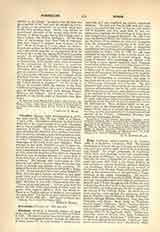

Foreman, ANDREW, a Scottish prelate, of good border family; b. at Hatton, near Berwick-on-Tweed; d. 1522. His talents marked him out for early promotion in his ecclesiastical career; through the influence of King James IV, he soon became a prothopotary Apostolic and was employed on various important missions. The king sent him in 1497 with two other envoys to conclude the truce of Aytoun with Henry VII of England, and four years later he was em-powered to negotiate for the marriage of King James with King Henry’s daughter Margaret. By 1502 Foreman was Bishop of Moray (for which see, notwithstanding the protest of the primate, he procured exemption from the metropolitan jurisdiction of St. Andrews); he was also “commendatory” abbot of important monasteries both in Scotland and England. Appointed ambassador to Henry VIII in 1509, he was commissioned by his sovereign to try to bring about universal peace with a view to a new crusade. King Louis of France, after concluding an alliance with the King of Scots against England, made Foreman Archbishop of Bourges, and it was Pope Julius II‘s intention to raise him to the cardinalate. The successor of Julius, Leo X, did not carry out this intention, but nominated Foreman in 1514 Archbishop of St. Andrews and legate a latere. He received at the same time the Abbey of Dunfermline in commendam, and seems to have held also, at one time or another, the rich Abbeys of Kilwinning, Dryburgh, and Arbroath. The new primate’s eight years’ tenure of his see was marked by vigorous administration; and he did much to consolidate the episcopal authority, procuring the restoration to his province of the Dioceses of Dunkeld and Dunblane, and holding an important synod, the enactments of which, still extant, throw an important light on the condition of the Scottish Church immediately before the Reformation. These statutes testify to the primate’s zeal for the amelioration of the state of the clergy, for the reform of abuses, the advancement of learning, and the augmentation of the solemnity of the services of the Church. Archbishop Foreman was buried in Dunfermline Abbey.
D. O. HUNTER-BLAIR

